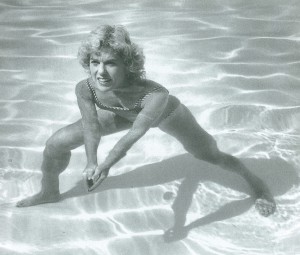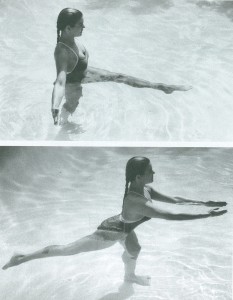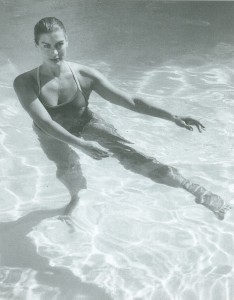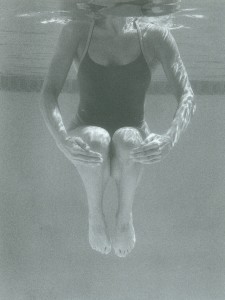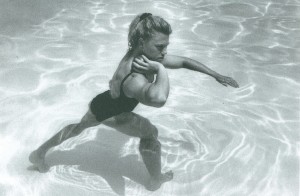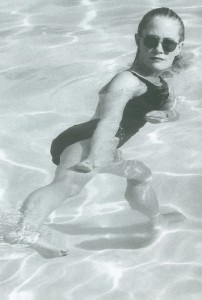
Cross-training for your sport in water becomes more and more appealing as the days get hotter during the summer. You can’t always train in the cool early-morning hours or evening, but you may live somewhere that there simply isn’t a cool time of morning or night. So on particularly hot days, stay cool in the pool while you increase your strength, power, aerobic and anaerobic fitness. You can train as gently or as hard as you wish in water while you improve your speed, flexibility, and sports skills. You can follow the lead of many legendary athletes.
When sport-specific Waterpower Workouts® were first offered to Olympic track and field athletes in 1983, they were considered an emergency tool only – a way to keep athletes active and sane during rehabilitation. But the biggest names of the sport in those days such as Joan Benoit and Mary Decker were returning to the track stronger and faster after their water workouts, and soon coaches began integrating pool sessions into their annual training programs. No longer did they wait for injury to strike to turn to water. By 1988 Waterpower Workouts were standard practice with Olympic medalists such as Florence Griffith Joyner, Al Joyner, Carol Lewis, Andrew Phillips, Kim Gallagher, Diane Dixon, Gail Devers, and Valerie Brisco. Their progressive coaches began cross-training these athletes in water whenever they sensed the athlete becoming vulnerable to injury. You can do the same.
Think of your sport. Whenever you move from one fitness level to the next – increasing speed, intensity, or volume – you run the greatest risk of injury. During these transition states you can run your fastest training intervals in the water; you can attempt your highest jumps using water as a landing cushion; and you can add your extra volume or even hours of aerobic work in the water. In this way, you prepare your body for the increasing demands of your sport without increasing the impact on your weight-bearing joints.
You can do these five moves for a sample cross-training workout without needing anything but a bathing suit! Just find a pool where you can stand in chest-deep water and do these plyometric (jumping) exercises that are sure to get your heart rate up.
1) Lunges: Bend your right knee and place your right foot a full stride ahead of your left foot. Put your left arm forward for counterbalance. Jump up and switch arm and leg positions so that left leg and right arm are now forward. Each right-left cycle is one repetition (rep). Do 30 reps.
2) Rocking Horse: Rock forward onto your left foot then back onto your right. Sweep both arms forward as you go forward and backward as you go back. After 30 reps with the left foot forward, switch legs and put the right foot forward for 30 more reps.
3) V-Kicks: Stand on your right leg and extend your straight left leg up and out to the side about 45 degrees. Bounce onto your left leg and lift your right leg up to the side keeping it straight. Sweep both arms toward the leg that lifts. Swinging the arms back and forth is one repetition. Do 30 reps.
4) Power Frog Jumps: Bounce with your feet together and your arms stretched out to your sides. Jump and left both knees toward your chest. At the same time sweep both arms forward to meet in front of you. Pull the arms back to their starting position as your feet return to the pool bottom. Jump immediately back up again without a bounce between Frog Jumps. Keep your chest lifted. 30 reps.
5) Running in Place: Begin running in place, simulating good form when running on land. Focus your eyes straight ahead on a focal point, which will help you keep your head and chest lifted. The knees lift to 90 degrees and the elbows pull straight back on each step. Now increase speed while maintaining good form. To do interval training, run fast, slow down to recover, then speed up again. Notice that the faster you run, the more you challenge your core muscles as well as your biceps and shoulder muscles.
If you need more work, do all five exercises again. Or find the rest of the running and jumping exercises in The Complete Waterpower Workout Book. All photos came from that book.
And what about exercises that pertain to your sport? You can add them simply by copying a key technique you want to improve. For instance, racquetball players take old rackets into the pool to practice their swing. When performing this movement in the pool, the water’s resistance increases muscular strength for the swing while it also slows the movement, letting you have extra seconds per swing to feel your body parts in “freeze frame,” which in turn gives you more time for feedback to correct any flaws in the motion.
In water, you can teach your body to assume your sport’s key positions that are difficult to reach on land. For instance, it is hard to bend low enough when digging a volleyball, putting the shot, or hitting a kill shot in racquetball. You can practice the perfect form in the buoyancy of water until your body learns the “feel” of the correct position. You’ll be able to do more repetitions in water without over stressing your knees, and you’ll add grace to your movement.
Just remember that the more closely you duplicate the exact skill of your sport in the water, the better your work will transfer back to land.
At the end of your pool workout, you should find yourself refreshed, even on the hottest of days. If you pushed yourself, you should also feel totally satisfied that you got a powerful workout even though you don’t feel the muscular heaviness you might have felt on land. And while you’re feeling relaxed and hate to get out of the water, give yourself something might tend to overlook in your normal training routine – plenty of time to stretch before you leave the pool.
Lynda Huey, M.S., founder of CompletePT Pool & Land Physical Therapy and Huey’s Athletic Network, is a former athlete and coach whose own injuries led her into the water to find fitness and healing. She has cross trained many of the world’s best athletes in water from track and field, basketball, baseball, tennis, ice hockey and other sports. Lynda, an international speaker, is the author of four books on water exercise and water rehabilitation. Her training methods will soon be available online at LyndaHuey.com.

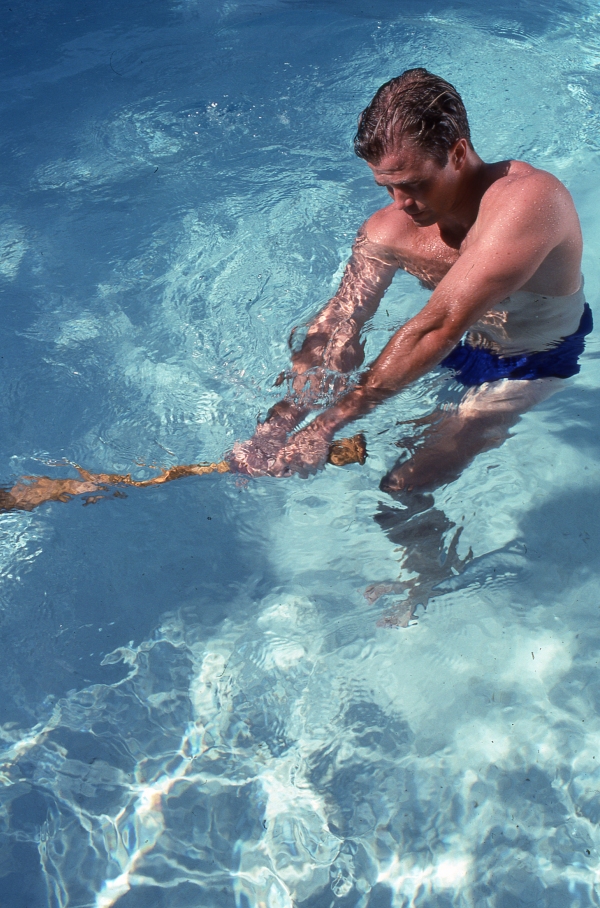
 .
.